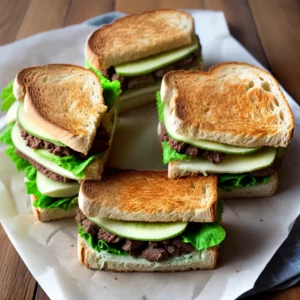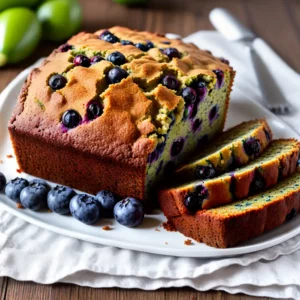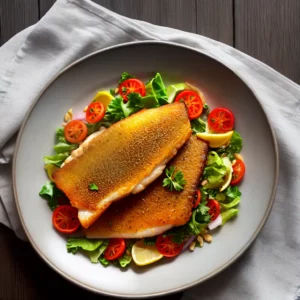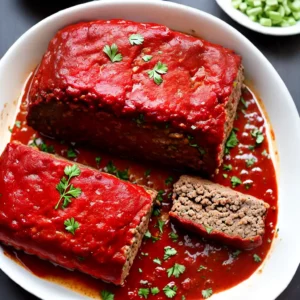Welcome to my guide on how to tell if corn on the cob is bad. As a corn lover, I understand the disappointment of biting into a cob only to discover it’s gone bad. But fear not, I’m here to help you identify the key indicators of freshness and spoilage when it comes to corn on the cob. By paying close attention to a few signs, you can ensure that every ear of corn you enjoy is delicious and safe to eat.
Before we dive into the details, let’s cover some basic information about corn and the indicators you should be aware of. By knowing what to look for, you’ll be equipped to make informed decisions when selecting and storing your corn. So, let’s get started!
Key Takeaways:
- Soft or mushy kernels, discoloration, or mold growth are indicators of bad corn on the cob.
- Other signs of spoiled corn include a sour or musty odor, tough or shriveled kernels, and a slimy or sticky texture.
- When choosing fresh corn at the store, look for firm ears with bright green, moist-looking husks and fresh silk tassels.
- Store unshucked corn in the refrigerator and shucked corn in an airtight container or storage bag to maintain freshness.
- Visually inspect the corn for wrinkled, discolored, or moldy kernels, as well as black spots.
Choosing Fresh Corn at the Store
When it comes to selecting fresh corn at the store, there are a few key indicators to look out for. Start by examining the husks. They should be bright green and moist-looking, with minimal browning at the top. A firm touch is also a good sign of freshness. The kernels should feel plump when gently squeezed, and the silk tassels should appear fresh and vibrant.
If you prefer to buy unshucked corn, remember to check the weight. The cobs should feel heavy, indicating that they are filled with juicy kernels. Avoid corn with dried-out husks, fully browned tassels, or withered and dry kernels, as these are signs that the corn is not fresh and may have already started to spoil.
To make it easier for you, here’s a summary of what to look for when choosing fresh corn at the store:
- Bright green and moist-looking husks
- Minimal browning at the top of the husks
- Firm and plump kernels
- Fresh and vibrant silk tassels
- Avoid dried-out husks, browned tassels, or withered and dry kernels
By following these guidelines, you can ensure that you’re bringing home the freshest corn for your next delicious meal.
| Indicator | Sign of Freshness | Sign of Spoilage |
|---|---|---|
| Husks | Bright green and moist-looking | Dried-out or browned |
| Kernels | Plump and firm | Withered or dry |
| Silk Tassels | Fresh and vibrant | Fully browned |
Remember, fresh corn is a delicious and nutritious addition to any meal. By choosing the best quality corn at the store, you can enjoy the sweet and juicy flavors that only fresh corn can provide. Happy grocery shopping!
Storing Fresh Corn
Ensuring proper storage of fresh corn is essential to maintain its freshness and quality. Here are some guidelines for storing corn on the cob:
Refrigeration
Unshucked ears of corn should be stored in the crisper drawer of the refrigerator. The husks act as a protective layer and help retain moisture, keeping the corn fresh for longer. Place the ears in a plastic bag or wrap them in a damp paper towel to maintain humidity levels. Shucked corn can also be stored in an airtight container or storage bag in the refrigerator. Remember to consume refrigerated corn within a day or two to ensure optimal taste and crispness.
Freezing
If you won’t be able to consume the corn within a day or two, freezing is a great option to extend its shelf life. You can freeze unshucked ears or cut kernels to enjoy corn even during off-seasons. For unshucked ears, place them in a large plastic bag and squeeze out as much air as possible before sealing. Frozen corn on the cob can last up to four months. Alternatively, if you prefer to freeze just the kernels, cut them off the cob and store them in a freezer-safe bag. Frozen corn kernels can be kept for up to six months.
Proper storage of fresh corn helps to preserve its natural sweetness and crisp texture, allowing you to enjoy the flavors of summer year-round.
| Storage Method | Shelf Life |
|---|---|
| Refrigeration (unshucked ears) | 1-2 days |
| Refrigeration (shucked corn) | 1-2 days |
| Freezing (unshucked ears) | Up to 4 months |
| Freezing (cut kernels) | Up to 6 months |
Table: Shelf life of stored corn based on different storage methods.
Detecting Bad Corn by Appearance
When it comes to determining if corn on the cob is bad, its appearance can provide valuable clues. By visually inspecting the corn, you can identify signs of spoilage that indicate it is no longer fresh and should not be consumed.
One of the key indicators of bad corn is the presence of mold. Look for any wrinkled, discolored, or moldy kernels on the cob. Mold growth is a clear sign that the corn has started to spoil and should be discarded. Additionally, keep an eye out for black spots on the corn, as they can also indicate that the corn is past its prime and may be bad.
| Appearance of Bad Corn | Description |
|---|---|
| Wrinkled or discolored kernels | Signs of decay and spoilage |
| Moldy kernels | Clear indication that the corn has spoiled |
| Black spots on the corn | Signifies the corn is past its prime and may be bad |
It’s important to note any yellowing husks or brown silk as well. These visual cues can also signify that the corn is no longer fresh and may have started to spoil. By being observant of the appearance of the corn, you can make an informed decision about its freshness and whether it should be consumed.
Table: Appearance of Bad Corn
- Wrinkled or discolored kernels: Signs of decay and spoilage
- Moldy kernels: Clear indication that the corn has spoiled
- Black spots on the corn: Signifies the corn is past its prime and may be bad
Detecting Bad Corn by Smell
When it comes to determining if corn on the cob is bad, our sense of smell can provide valuable insights. Fresh corn should have a pleasant, sweet smell that is indicative of its freshness and quality. However, if you detect a sour or musty odor when peeling back the husk, it’s a clear sign that the corn may have gone bad.
The corn odor is a result of bacterial growth or mold formation, indicating that the corn is no longer safe to consume. Trust your nose and avoid eating corn that emits an unpleasant smell, as it may lead to foodborne illnesses or a disappointing taste experience.
Remember, the smell of corn on the cob should be fresh and inviting. If you encounter a rancid or off-putting odor, it’s best to discard the corn and opt for a fresh ear.
| Smell | Possible Indication |
|---|---|
| Sweet | Fresh and safe to eat |
| Sour or musty | The corn has gone bad |
| Rancid or unpleasant | Discard the corn and get a fresh ear |
Listen to your sense of smell when evaluating the freshness of corn on the cob. A sweet aroma ensures a delightful culinary experience, while a foul odor signifies that it’s time to find a new ear of corn.
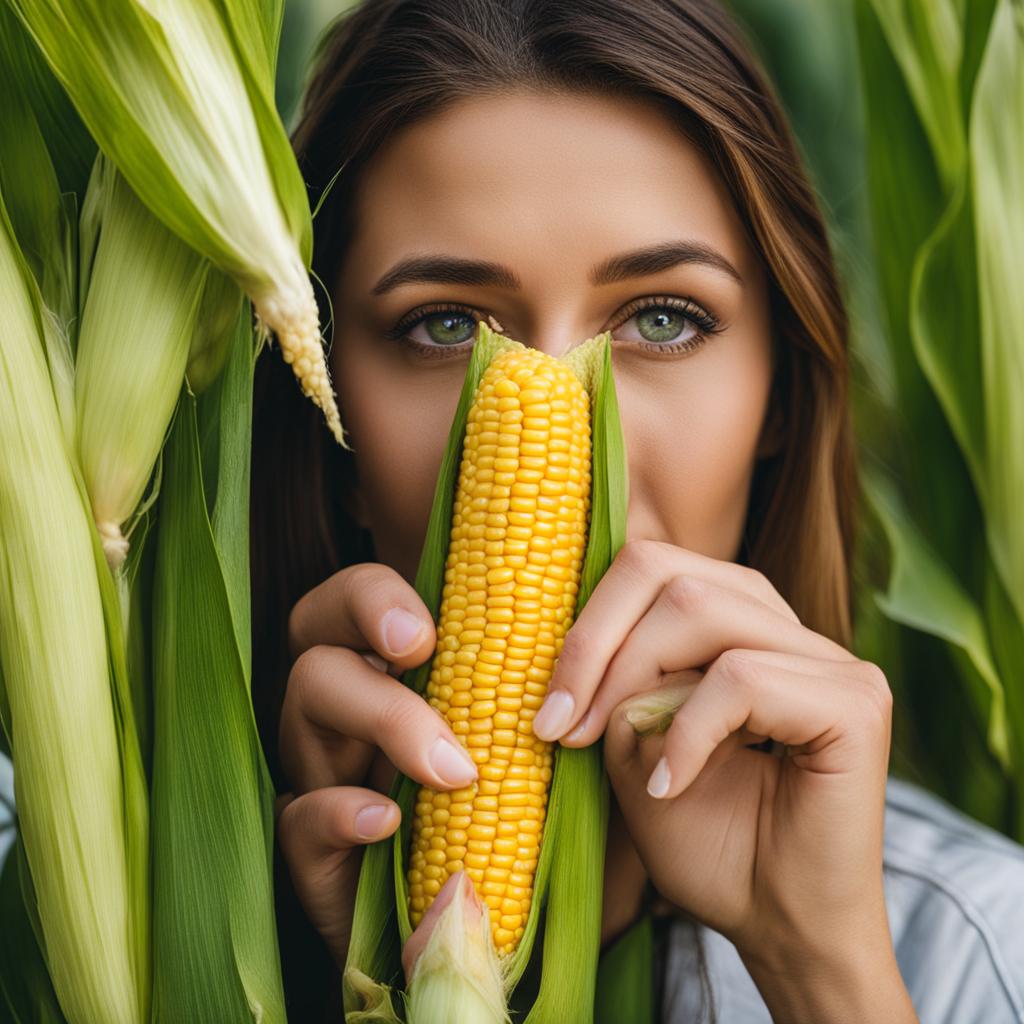
Related: Storing Fresh Corn
Proper storage of fresh corn can help preserve its quality and prevent spoilage. To extend the shelf life of corn on the cob, it is advisable to store unshucked ears in the crisper drawer of your refrigerator. Alternatively, shucked corn can be stored in an airtight container or storage bag in the refrigerator.
By storing corn correctly, you can maintain its freshness for a longer period, allowing you to enjoy delicious and healthy corn on the cob whenever you like. Don’t let bad corn ruin your meal – use your sense of smell to ensure the corn is fresh and ready to be enjoyed!
Detecting Bad Corn by Touch
When it comes to determining the freshness of corn on the cob, the texture plays a crucial role. By using our sense of touch, we can identify important clues about the quality of the corn. Fresh corn kernels should feel plump and firm when gently squeezed. If the kernels feel tough or shriveled, it may indicate that the corn is past its prime and not suitable for consumption. Additionally, the cob should not have a slimy or sticky texture, as this can be a sign of spoilage. When handling corn on the cob, pay attention to its texture to ensure you’re selecting the freshest and most delicious corn.
Table: Signs of Bad Corn by Touch
Below is a table summarizing the different indicators of bad corn based on its texture:
| Texture | Possible Indicators of Bad Corn |
|---|---|
| Plump and Firm | Fresh corn |
| Tough or Shriveled Kernels | Corn past its prime |
| Slimy or Sticky Texture | Spoilage |
By referring to this table, you can easily identify the texture-related signs of bad corn. Remember to prioritize plumpness and firmness when selecting corn on the cob, as these qualities are indicators of freshness.
“When handling corn on the cob, pay attention to its texture to ensure you’re selecting the freshest and most delicious corn.”
Detecting Bad Corn by Taste
When it comes to determining the freshness of corn on the cob, your taste buds can provide valuable information. By tasting a few kernels, you can get a sense of the corn’s flavor and texture, helping you to determine if it is still good to eat.
Fresh corn on the cob should have a sweet and crisp taste. Each kernel should burst with a juicy and vibrant flavor, offering a delightful eating experience. When you bite into a fresh cob of corn, you should be able to taste its natural sweetness and enjoy its satisfying crunch.
However, if the corn on the cob tastes bitter or has an off-taste, it is likely no longer fresh. An unpleasant taste can be an indicator that the corn has started to spoil or has been stored improperly. If you detect any unusual or unpleasant flavors when tasting the corn, it is best to discard it and select a new cob.
“Fresh corn on the cob should have a sweet and crisp taste. When you bite into a fresh cob of corn, you should be able to taste its natural sweetness and enjoy its satisfying crunch.”
Freezing Corn on the Cob in the Husk
When it comes to preserving the freshness and flavor of corn on the cob, freezing it in the husk is a great option. This method helps to lock in the natural sweetness and juiciness of the corn, allowing you to enjoy it even when it’s out of season. To freeze corn on the cob in the husk, follow these simple steps:
- Start by blanching the ears of corn. Blanching helps to preserve the color, texture, and nutritional value of the corn. Boil the ears of corn in a pot of water for about 4 minutes.
- After blanching, transfer the ears of corn to a bowl of ice water to cool them down quickly. This process, known as “shocking,” stops the cooking process and helps to maintain the crispness of the kernels.
- Once the corn is cool, pat it dry with a clean towel to remove excess moisture. This will prevent ice crystals from forming during the freezing process.
- Place each ear of corn in a plastic freezer bag, ensuring that the husk is intact. Remove as much air as possible from the bag before sealing it tightly.
- Label the bags with the date of freezing and place them in the freezer. Frozen corn on the cob can be stored for up to 8-12 months.
When you’re ready to enjoy the frozen corn on the cob, simply thaw it in the refrigerator overnight or cook it directly from frozen. Whether grilled, boiled, or roasted, frozen corn on the cob in the husk retains its fresh taste and texture, making it a convenient and delicious option for year-round enjoyment.
Freezing Corn on the Cob: Tips and Tricks
Here are a few additional tips and tricks to ensure successful freezing of corn on the cob:
- Choose fresh, ripe corn with plump kernels and bright green husks for the best results.
- If you prefer, you can remove the silk tassels before freezing the corn. However, leaving them on can help to protect the kernels from freezer burn.
- Consider blanching and freezing corn on the cob in small batches to make it easier to thaw and use only what you need.
- If freezer space is limited, you can remove the husks and silks, and cut the corn off the cob before freezing. Store the kernels in airtight containers or freezer bags.
- Remember to always label your frozen corn with the date of freezing to keep track of its freshness.
By following these simple steps and tips, you can preserve the natural goodness of corn on the cob and enjoy its sweet taste all year round. Freezing corn in the husk is a convenient and practical way to extend the shelf life of this beloved summer staple.
Storing Uncooked Corn on the Cob: Room Temperature vs. Refrigerator
When it comes to preserving the freshness of uncooked corn on the cob, the storage method plays a crucial role. Let’s explore the differences between storing corn at room temperature and refrigerating it, along with their respective impacts on the corn’s shelf life.
Storing at Room Temperature
Keeping uncooked corn on the cob at room temperature is possible for a few days, but it’s important to ensure the corn is stored in a dry and cool place away from direct sunlight. This method is suitable for short-term storage when you plan to consume the corn within a day or two. However, be aware that storing corn at room temperature may cause it to lose moisture more quickly, leading to a decline in freshness and taste.
Refrigerating in the Refrigerator
For longer storage, it is recommended to refrigerate uncooked corn on the cob. Place the corn in a plastic bag, seal it tightly, and store it in the refrigerator. This will help maintain the corn’s freshness, texture, and flavor for up to 5 days. It’s important to note that refrigeration slows down the natural aging process of corn and helps preserve its quality.
| Storage Method | Shelf Life | Key Considerations |
|---|---|---|
| Room Temperature | Up to a few days | – Store in a dry, cool place – Consume within a day or two – May result in faster moisture loss |
| Refrigerator | Up to 5 days | – Place in a plastic bag – Seal tightly – Helps preserve freshness and flavor |
By refrigerating uncooked corn on the cob, you can extend its shelf life while maintaining its quality. However, always remember to inspect the corn for signs of spoilage before consuming it, regardless of the storage method used. Choosing the right storage method ensures that you can enjoy sweet, fresh corn on the cob whenever you’re ready to prepare it.

Note: The image above serves as a visual representation and is not intended to depict specific storage methods.
Reheating Frozen Corn on the Cob
When it comes to enjoying the delicious flavors of frozen corn on the cob, there are a couple of reliable methods for reheating. Whether you prefer the convenience of the oven or the simplicity of the stovetop, both options will help you achieve that familiar taste and texture you love.
Oven reheating method
To reheat frozen corn on the cob in the oven, start by preheating it to 350°F (175°C). Wrap each cob tightly in aluminum foil, ensuring they are completely covered. Place the wrapped corn on a baking sheet and bake for 25-30 minutes, or until the corn is thoroughly heated. This method allows the corn to steam inside the foil, preserving its moisture and flavor.
Stovetop reheating method
If you prefer a quicker option, boiling frozen corn on the cob on the stovetop is a great choice. Fill a large pot with water and bring it to a rolling boil. Carefully place the frozen corn cobs into the boiling water and let them cook for about 5-7 minutes, or until heated through. Drain the corn and pat it dry before serving.
Both reheating methods effectively bring the frozen corn on the cob back to life, providing you with a tasty side dish or addition to your favorite recipes. Choose the method that suits your preferences and enjoy the convenience and versatility of reheated frozen corn on the cob.
Knowing the Shelf Life of Corn on the Cob
When it comes to enjoying corn on the cob, understanding its shelf life is essential. Proper storage and timely consumption are key to ensuring the freshness and quality of this delicious summertime staple. Let’s take a closer look at the shelf life of corn and how long you can expect it to stay fresh.
Uncooked corn on the cob can last for a few days at room temperature if stored in a dry and cool place away from direct sunlight. However, if you want to extend its freshness, it’s best to refrigerate uncooked corn in a plastic bag. When stored properly in the refrigerator, uncooked corn can remain fresh for up to 5 days.
Once cooked, corn on the cob should be consumed within a few days to ensure optimal flavor and texture. While corn can be reheated, it’s important to note that repeated heating and cooling can affect its taste. Therefore, it’s best to enjoy cooked corn on the cob right after it’s prepared.
If you find yourself with an abundance of corn on the cob, freezing is a great option. Frozen corn on the cob can be stored for an extended period, up to 8-12 months, without a significant loss in quality. To freeze corn on the cob, blanch it first by boiling for a few minutes, then cool it in ice water before drying and packing it in freezer bags.
By understanding the shelf life of corn on the cob, you can ensure that you’re enjoying this favorite summer treat at its freshest. Whether you’re savoring it right after purchase, refrigerating it for a few days, or freezing it for future enjoyment, knowing how long corn on the cob stays fresh is essential for a delicious and safe culinary experience.
Understanding Common Pests in Corn on the Cob
Corn on the cob is a popular summertime treat, but it’s not uncommon to find a surprise lurking in the kernels. One such unwelcome guest is the corn earworm—a common pest in corn crops. Although the presence of a worm may seem off-putting, rest assured that corn earworms are harmless and can easily be dealt with.
The corn earworm typically affects the silky end of the ear, leaving the rest of the cob untouched. If you happen to find a worm in your corn on the cob, simply cut off the chewed end and wash the cob before cooking it. While it may be somewhat unsettling, the presence of a corn earworm is a natural occurrence and does not make the corn unsafe to eat. In fact, discovering a worm can actually be a sign that the corn was not heavily treated with pesticides, which is a positive for those looking to enjoy more natural produce.
So, the next time you find a corn earworm in your corn on the cob, don’t panic. Just remove the affected area, give it a good wash, and proceed with your cooking. Remember, these common worms are harmless and do not pose any health risks. Enjoy your corn on the cob, knowing that you’ve embraced nature’s quirks along the way.
Importance of Knowing if Your Corn on the Cob is Bad
Fresh corn on the cob is a delightful and versatile ingredient that can elevate any meal. However, it is crucial to be able to determine if corn on the cob is bad to ensure food safety, enjoyability, and waste reduction.
First and foremost, being able to identify bad corn on the cob is essential for food safety. Consuming spoiled corn can lead to foodborne illnesses caused by harmful bacteria or toxins. These can cause symptoms such as nausea, vomiting, diarrhea, and in severe cases, even hospitalization. By knowing the signs of bad corn, you can protect yourself and your loved ones from potential health risks.
Additionally, serving bad corn to guests can result in embarrassing or potentially dangerous situations. Imagine hosting a dinner party and unknowingly serving corn that has gone bad. Not only will the taste and texture of the corn be unpleasant, but it can also ruin the overall dining experience. By ensuring that the corn on the cob is fresh and safe to eat, you can confidently serve it to your guests, knowing that you are providing a delicious and enjoyable meal.
Lastly, knowing if your corn on the cob is bad helps in reducing food waste. Buying and consuming bad corn not only wastes money but also contributes to the larger issue of global food waste. By being able to identify the signs of spoilage and avoiding purchasing or consuming bad corn, we can actively participate in reducing food waste and promoting sustainable food practices.
The Importance of Fresh Corn
Fresh corn brings a burst of sweetness to dishes and is a staple in many cuisines. By understanding how to determine if corn on the cob is bad, we can ensure that we are using the freshest and highest-quality corn in our meals. This not only enhances the flavor of our dishes but also allows us to fully enjoy the natural sweetness of corn.
In conclusion, knowing if corn on the cob is bad is essential for food safety, enjoyability, and waste reduction. By paying attention to the signs of spoilage, we can protect ourselves from potential health risks, provide delightful meals to our guests, and actively contribute to reducing food waste. So, the next time you’re selecting or preparing corn on the cob, remember to keep an eye out for the indicators of spoilage and savor the freshness of this delicious vegetable.
Conclusion
In conclusion, determining if corn on the cob is bad requires careful observation of its appearance, smell, touch, and taste. Signs of spoilage include soft or mushy kernels, mold growth, a sour or musty odor, tough or shriveled kernels, and a slimy or sticky texture.
Proper storage of corn, either by refrigerating or freezing, helps to extend its freshness and maintain its quality. When reheating frozen corn on the cob, there are different cooking methods you can choose from to enjoy flavors similar to fresh corn.
It’s important to understand the shelf life of corn and consume it within recommended timeframes to ensure its freshness and safety. By knowing how to determine if corn on the cob is bad, you can make informed choices, enjoy a delicious meal, and contribute to reducing food waste.
FAQ
How can I tell if corn on the cob is bad?
Signs of spoilage include soft or mushy kernels, discoloration, mold growth, a sour or musty odor, tough or shriveled kernels, and a slimy or sticky texture.
What should I look for when choosing fresh corn at the store?
Look for ears that are firm to the touch with bright green, moist-looking husks. The silk tassels should also look fresh, with only minimal browning at the top.
How should I store fresh corn?
Store unshucked ears in the crisper drawer of your refrigerator and shucked corn in an airtight container or storage bag in the refrigerator. You can also freeze corn for longer storage.
How can I visually detect bad corn?
Look for wrinkled, discolored, or moldy kernels, as well as black spots on the corn. Yellowing husks or brown silk may also signify that the corn is past its prime and may be bad.
Does the smell of corn indicate if it is bad?
Fresh corn should have a sweet smell, while bad corn may emit a sour or musty odor. If you notice a strong, unpleasant smell when peeling back the husk, it’s best to avoid eating the corn.
How can I tell if corn on the cob has gone bad by touch?
The kernels should be plump and not shriveled, and the cob should not feel slimy or sticky to the touch. If the kernels are tough or the cob has a slimy texture, it may be a sign that the corn is no longer fresh.
Can I taste the corn to determine if it is bad?
Fresh corn will have a sweet and crisp taste, while bad corn may have a bitter or off-taste. If the kernels taste unpleasant, it’s best to discard the cob.
How can I freeze corn on the cob?
Before freezing, blanch the ears of corn by boiling them for a few minutes and then transferring to ice water to cool. Pat the ears dry, place them in plastic freezer bags, and remove as much air as possible.
Can I refrigerate uncooked corn on the cob?
Yes, uncooked corn can be stored in a plastic bag in the refrigerator to preserve its freshness. Refrigerated uncooked corn on the cob can stay fresh for up to 5 days.
How can I reheat frozen corn on the cob?
The best methods to reheat frozen corn on the cob are either by placing it in the oven or boiling it on the stovetop. Choose the method that is most convenient for you to enjoy delicious reheated corn on the cob.
What is the shelf life of corn on the cob?
Uncooked corn can stay fresh for a few days at room temperature or up to 5 days when refrigerated. Cooked corn on the cob should be consumed within a few days.
Should I be concerned if I find a worm in corn on the cob?
No, finding a worm, specifically the corn earworm, is a natural occurrence and does not make the corn unsafe to eat. Simply cut off the chewed end and wash the cob before cooking it.
Why is it important to know if corn on the cob is bad?
Consuming bad corn can pose health risks, result in an unpleasant taste and texture, lead to embarrassing situations, and waste money and resources. Knowing how to determine if corn on the cob is bad helps ensure food safety and reduces food waste.
Source Links
- https://flavrstream.com/how-to-know-if-corn-on-the-cob-is-bad/
- https://www.tastingtable.com/872117/how-to-tell-if-corn-on-the-cob-has-gone-bad/
- https://www.eatingwell.com/article/7992645/how-to-tell-if-corn-on-the-cob-is-bad/
Related Recipes:
 Spotting Bad Lemons: What to Look For
Spotting Bad Lemons: What to Look For
 Signs Your Almond Milk Has Spoiled
Signs Your Almond Milk Has Spoiled
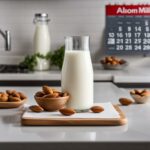 Does Almond Milk Go Bad? How to Tell and Storage Tips.
Does Almond Milk Go Bad? How to Tell and Storage Tips.
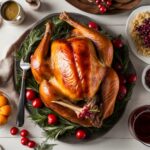 Identifying a Bad Whole Turkey
Identifying a Bad Whole Turkey
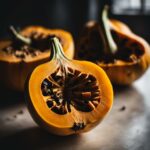 Spotting Bad Butternut Squash
Spotting Bad Butternut Squash
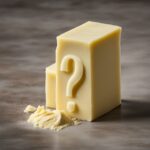 Can You Eat Expired Butter? What You Need to Know
Can You Eat Expired Butter? What You Need to Know
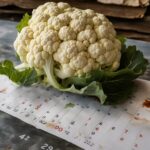 How to Tell if Cauliflower is Past Its Prime
How to Tell if Cauliflower is Past Its Prime
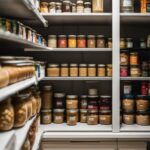 Does Peanut Butter Go Bad? Shelf Life and Storage Tips
Does Peanut Butter Go Bad? Shelf Life and Storage Tips



